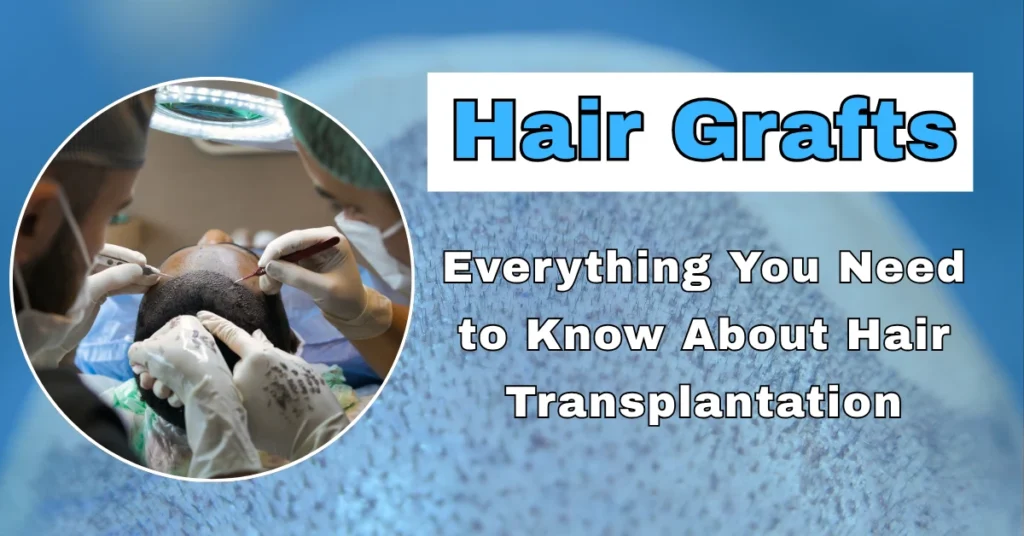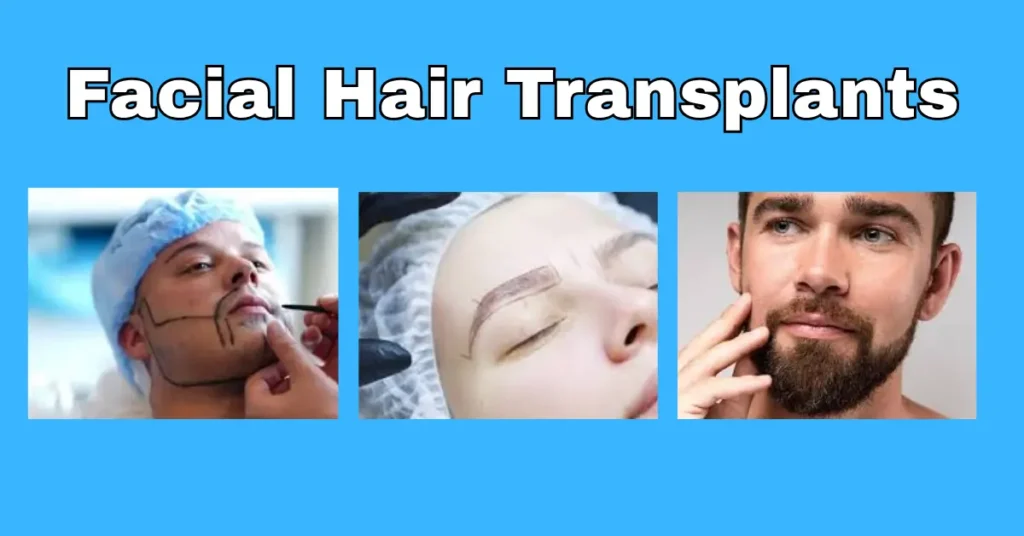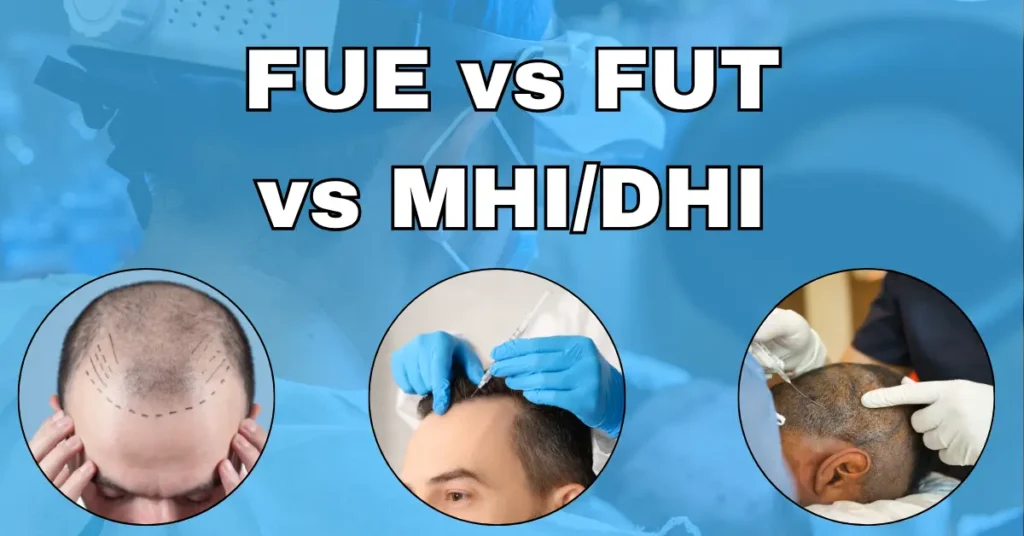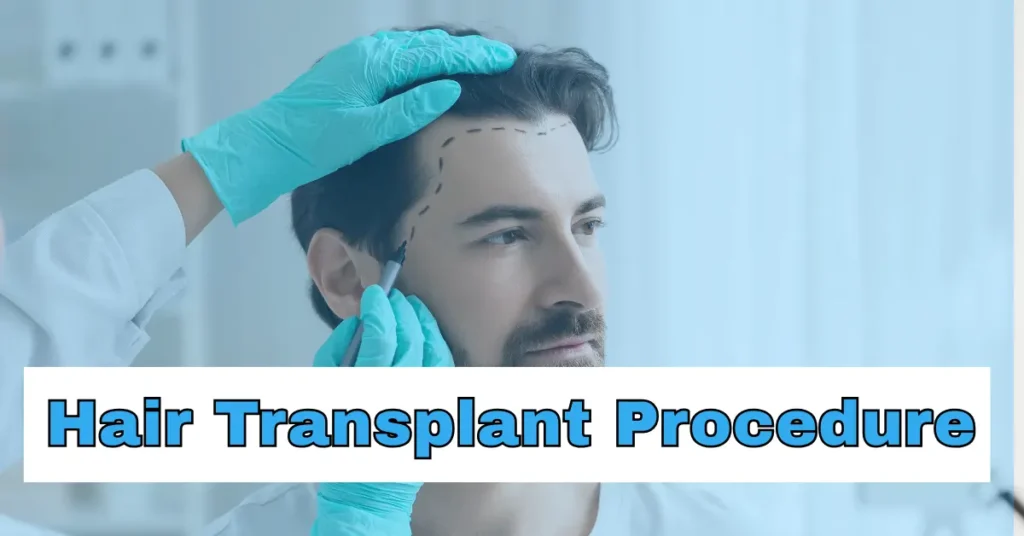Hair Grafts: Everything You Need to Know About Hair Transplantation is your complete guide to understanding how modern hair restoration works. If you’re struggling with thinning hair or bald spots, hair grafts offer a long-term, natural-looking solution for hair loss. A hair graft involves moving healthy hair follicles—usually from the donor area at the back or sides of your scalp—to bald or thinning zones known as the recipient area.
This hair transplant procedure, commonly performed using advanced types of hair transplant techniques like follicular unit extraction (FUE) or follicular unit transplantation (FUT), helps rebuild receding hairlines, fill sparse areas, and restore confidence. It’s suitable for men and women dealing with androgenetic alopecia, aging, stress, or hormonal changes.
Wondering how many hair grafts you’ll need or what your hair transplant expectations should be? This guide breaks down every aspect of the process — from consultation to recovery — to help you understand your options for hair regrowth and long-lasting results. Whether you’re exploring hair transplant surgeries, comparing MHI & DHI methods, or seeking a non-surgical solution to hair loss, this resource will give you the clarity you need before you take the next step.
Understanding Hair Loss and the Role of Hair Grafts
Hair loss affects millions of men and women globally. Whether triggered by genetics, hormonal imbalance, aging, or stress, the experience of seeing your hair thin or lose hair can deeply impact confidence. Luckily, medical science now offers proven treatments for hair loss — and one of the most effective is hair graft transplantation.
In this guide, we’ll cover what hair grafts are, how different types of hair transplant procedures work, recovery details, costs, and frequently asked questions. If you’re considering a hair restoration surgery, this article will give you all the essential knowledge you need.
What Are Hair Grafts?
A hair graft is a small section of the scalp containing hair follicles, carefully taken from the donor site (usually the back or sides of the head) and implanted into the balding recipient area. Each hair graft generally contains 1–4 hairs. These transplanted hair follicles are genetically resistant to balding, meaning they’ll continue to grow even after relocation.
Hair grafts are the foundation of hair transplant surgeries, serving as the building blocks for new hair growth and a natural appearance.
Step-by-Step Hair Transplant Procedure
The hair transplant procedure involves multiple steps and is performed under local anesthesia by an experienced hair transplant surgeon. Here’s what typically happens:
1. Consultation and Evaluation
Your journey begins with a detailed assessment. The transplant surgeon examines your scalp, identifies the type of hair loss, checks the quality of your donor area, and decides whether you’re a good candidate. Factors like androgenetic alopecia, hair texture, and overall health play a role.
2. Designing the Hairline
Next, the surgeon designs a natural hairline that complements your face and age. A realistic hairline is key to achieving a balanced and natural look after hair restoration.
3. Harvesting the Grafts
There are several types of hair transplant techniques used to collect hair grafts:
- FUT (Follicular Unit Transplantation): A thin strip of scalp is taken from the donor area, and hair follicles are separated under a microscope.
- FUE (Follicular Unit Extraction): Individual follicles are extracted directly from the donor site using micro punches. This method leaves minimal scarring and offers faster recovery.
- MHI & DHI methods: These are newer innovations of FUE hair transplantations, allowing direct implantation of hair grafts with greater precision and density.
4. Preparing the Recipient Area
Tiny incisions are made in the recipient area following the natural growth pattern. Each transplanted hair is placed at the right angle and direction to ensure a realistic outcome.
5. Post-Procedure Care
After the surgery, you’ll receive aftercare instructions — including how to clean your scalp, medications to prevent infection, and ways to promote healing and new hair growth.
Types of Hair Grafts
Each hair graft serves a unique role in achieving a balanced and natural appearance:
- Single-Hair Grafts: Used for natural-looking hairlines or eyebrows.
- Double-Hair Grafts: Ideal for creating moderate density.
- Triple and Quadruple-Hair Grafts: Perfect for filling the crown or larger thinning zones.
Modern hair transplant surgeries often use a mix of these grafts to create a realistic blend across the scalp.
Advantages of Hair Grafts
- Permanent Solution: The transplanted hair from the donor site is typically resistant to balding and offers long term results.
- Natural Look: When done by skilled transplant surgeons, the result mimics natural hair growth.
- Minimally Invasive: FUE hair transplantations and MHI / DHI techniques ensure minimal scarring and faster recovery.
- Confidence Boost: A successful hair transplant experience can dramatically improve self-image and quality of life.
Risks and Side Effects
While modern types of hair transplant procedures are safe, a few risks exist:
- Scarring (mostly with FUT).
- Shock Loss, where existing or transplanted hair temporarily sheds.
- Infection, if aftercare isn’t followed.
- Uneven Results, due to poor technique or unskilled hair transplant surgeons.
- Failed Grafts, requiring touch-up sessions.
Choosing a qualified, experienced hair transplant surgeon ensures safety and optimal hair regrowth.
How Many Hair Grafts Do You Need?
The number of hair grafts depends on your type of hair loss, scalp area, and desired density.
| Norwood Scale (Hair Loss Stage) | Estimated Grafts Required |
| Stage 2 – Mild recession | 500–1,500 grafts |
| Stage 3 – Moderate recession | 1,500–2,500 grafts |
| Stage 4 – Hairline and crown thinning | 2,500–3,500 grafts |
| Stage 5–6 – Extensive baldness | 3,500–5,000+ grafts |
A skilled hair transplant surgeon can use strategic placement to deliver full coverage even with fewer grafts.
Cost of Hair Grafts
The price of hair restoration varies by location, surgeon experience, and number of hair grafts needed:
- United States: $3,000 – $15,000
- Turkey: $1,500 – $4,000
- India: $800 – $3,000
- UK/Europe: £2,000 – £10,000
Some clinics charge per graft, typically $2–$10. While affordability matters, always prioritize the skill of the transplant surgeons over cost for the best hair transplant experience.
Recovery and Hair Regrowth Timeline
- Week 1–2: Redness, mild swelling, and scabbing; hair grafts start settling.
- Week 3–4: Temporary shock loss — transplanted strands may fall but hair follicles remain intact.
- Month 3–4: Early new hair growth begins.
- Month 6–9: Noticeable hair regrowth and thickening.
- 12 Months: Final results; your transplanted hair matures and gains density.
Ideal Candidates for Hair Grafts
You’re a good candidate if you:
- Are above 25 (with stable type of hair loss).
- Have sufficient donor area density.
- Are healthy and have realistic hair transplant expectations.
- Understand the long term commitment to care and maintenance.
Alternatives to Hair Grafts
Not ready for surgery? Non-surgical treatments for hair loss include:
- Minoxidil or Finasteride for slowing hair loss.
- PRP therapy for stimulating dormant hair follicles.
- Laser therapy for scalp rejuvenation.
- Scalp micropigmentation to replicate shaved-hair illusion.
While these may improve thickness, they cannot replace transplanted hair in bald areas.
Frequently Asked Questions
Q1: Is the hair transplant procedure painful?
A: It’s performed under local anesthesia, so discomfort is minimal. Mild soreness may occur post-surgery.
Q2: Are results permanent?
A: Yes, transplanted hair from resistant donor areas typically lasts a lifetime.
Q3: Can women undergo hair transplant surgeries?
A: Absolutely. Hair restoration benefits both men and women dealing with thinning or bald spots.
Q4: Will I need more than one session?
A: It depends on your type of hair loss and density goals. Severe baldness may require multiple FUE hair transplantations.
Q5: How soon will I see results?
A: New hair growth usually begins by the third month, with full results appearing within a year.
Final Thoughts
Hair grafts provide a medically proven, long-term solution to hair loss. With advanced types of hair transplant procedures like FUE, FUT, MHI, and DHI methods, patients can now enjoy natural, permanent hair regrowth with minimal downtime.
If you’re considering this treatment for hair loss, consult an experienced hair transplant surgeon, review before-and-after photos, and set realistic hair transplant expectations. A successful hair transplant experience can truly transform your appearance, restore your confidence, and help you enjoy a lifetime of healthy, natural-looking hair.
Your journey toward hair restoration and renewed confidence begins with a single consultation — take that first step today toward lasting new hair growth and the perfect solution for hair loss.

















